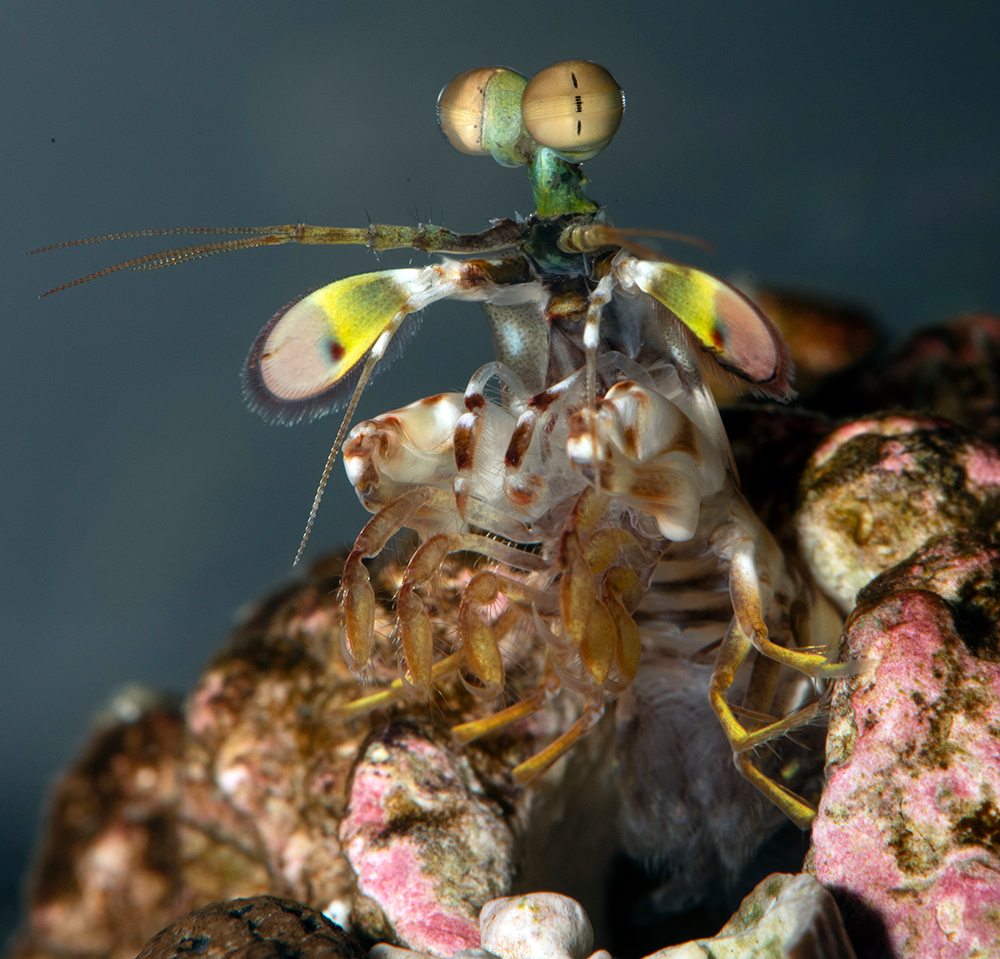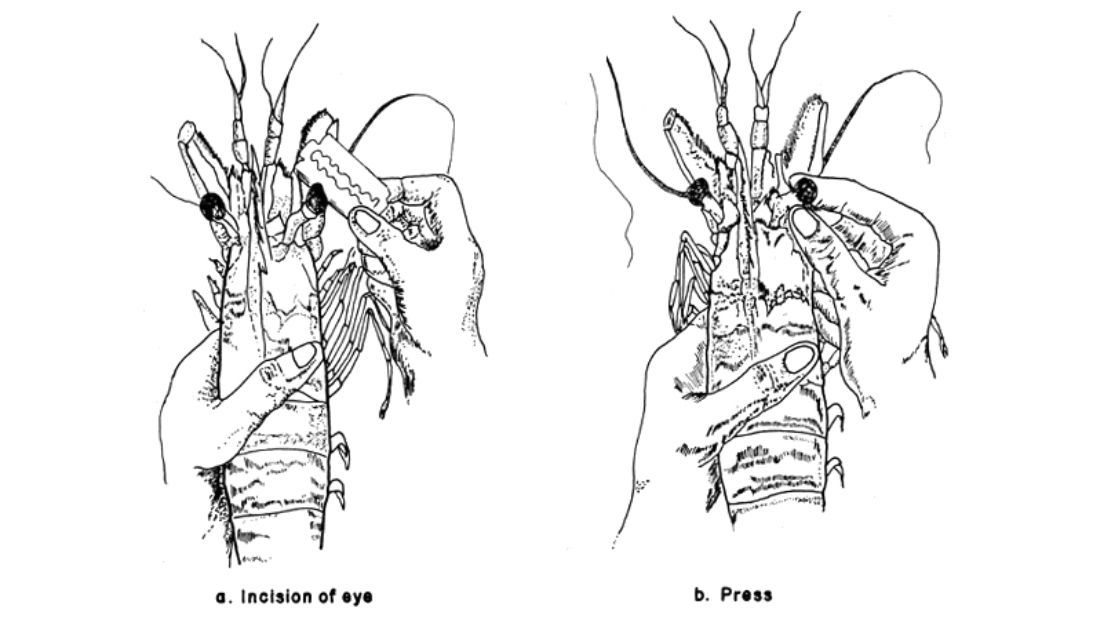Shrimp – those tasty little crustaceans we love to eat – may seem like simple creatures. But a look at their brain structure reveals some fascinating complexity. New research shows that shrimp brains have more in common with insect brains than previously thought. Read on to learn about the shrimp brain, its similarities to insects, and what this means about evolution and intelligence.
Do Shrimps Have Brains?
Yes, shrimp absolutely have brains located in their heads. The shrimp brain is relatively simple compared to vertebrate brains, but more complex than you might expect.
Some key facts about the shrimp brain
-
Made up of several fused segments with specialized lobes and neural clusters
-
Includes an optic lobe for visual processing
-
Has a protocerebrum where sensory information integrates
-
Possesses structures called neuropils that function in learning and memory
-
Estimated to contain around 100,000 neurons
So while tiny, the shrimp brain is sophisticated enough to handle the sensory, processing, and learning needs of these ocean-dwelling arthropods.
Shrimp And Insect Brains Share Common Structures
New neuroscience research reveals that shrimp brains share defining features with insect brains. One of these is the presence of mushroom bodies – brain structures involved in learning, memory and navigation.
Previous scientific consensus was that crustaceans like shrimp lacked mushroom bodies entirely. But examining shrimp brain tissue shows the same anatomical hallmarks that make up mushroom bodies in insects:
-
A column-like peduncle or lobe
-
An intricate mesh of intersecting neural inputs and outputs
-
Similar networks of neurons and proteins tied to learning and memory
This suggests that shrimp mushroom bodies may serve similar functions to their insect counterparts – consolidating sensory information, forming associations, and enabling complex behaviors.
Shared Evolutionary Origins Of Mushroom Bodies
The common presence of mushroom bodies in shrimp and insects is evidence these brain structures evolved in a shared ancestor and were passed down.
Shrimp and insects are both arthropods – invertebrates with external skeletons and jointed limbs. They diverged from a common ancestral line around 500 million years ago.
The ancient origin of mushroom bodies suggest they emerged early in arthropod evolution and conferred advantages that led these brain structures to persist.
Possessing mushroom bodies may have enabled early arthropods to become more mobile, explore 3D environments, and establish behaviors that supported their survival and spread.
Do Shrimp Have Good Memories?
The mushroom bodies found in the shrimp brain suggest they likely have decent learning and memory capacities. Studies on insects reveal mushroom bodies:
-
Receive and consolidate sensory information
-
Form associations between sensory input, motor functions, reward and punishment
-
Allow information to be encoded as short and long-term memories
-
Help navigate 3D spaces using visual cues
Shrimp mushroom bodies probably serve similar roles, though their exact capabilities remain to be directly tested. But the structures provide a physical basis for memory within the shrimp brain.
Are Shrimp As Smart As Insects?
It’s tempting to conclude that similar mushroom body structures imply comparable intelligence between shrimp and insects. But we have to be careful of this assumption.
Some key points:
-
Mushroom body size varies greatly between different shrimp and insect species
-
Large structures don’t necessarily mean greater intelligence
-
Different habitats may demand differing cognitive abilities
-
Intelligence depends on total neural connections, not just mushroom bodies
While their brains show clear parallels, shrimp and insects appear adapted to different environmental niches. This likely shaped the development of their distinct behaviors and abilities. We need more direct measures to truly compare their levels of intelligence.
Shrimp Brain Structure Reflects Lifestyle
One hypothesis for the variation seen between some shrimp and insect mushroom bodies is lifestyle differences.
Shrimp like lobsters and crabs mostly live on the sea floor. Thus their mushroom bodies may be less elaborately developed.
Insects like flies that traverse complex 3D habitats seem to have larger, more sophisticated mushroom body structures. This may support their greater navigational needs.
So while the shrimp brain contains key learning centers, its requirements differ from insects that move through and perceive the world very differently. Neural structures adapt to an animal’s behavioral ecology.
What The Shrimp Brain Tells Us About Evolution
The surprising similarities between shrimp and insect brains provide a few evolutionary insights:
-
Important brain structures can be preserved over hundreds of millions of years if they increase fitness.
-
Slight variations in shared brain structures can develop in response to different environmental pressures.
-
Similar behaviors like spatial navigation may emerge from common underlying neural systems.
-
Corresponding parts of simple brains could be homologous to regions in more complex brains like the human hippocampus.
Studying simple brains in shrimp and insects gives clues about the ancient origins of key brain systems and principles in even more sophisticated animals further up the evolutionary tree.
A New Look At Simple Creatures
So next time you eat shrimp, take a moment to appreciate these small yet amazing creatures. Their brains may not be as advanced as a human’s, but research shows they contain some surprisingly sophisticated structures analogous to our own. Shrimp have more going on between their little eyes than we ever realized!
The overlaps between shrimp brains and our insect cousins also reminds us that even simple animals have evolved clever ways to learn, remember and interact with the world around them. Appearances can be deceiving – sometimes a miniature brain can do mighty things!

Do prawns have a central nervous system?
“But prawns don’t have central nervous systems,” you may say in response. “So they can’t feel pain, really. ” It is true that prawns don’t have central nervous systems. But Professor Robert Elwood, who has spent decades studying the fascinating lives of crustaceans, doesn’t agree with the idea that having a central nervous system is the only way to show that you can feel pain. He says that telling an animal it can’t feel pain because it doesn’t have the same biology as humans is like telling them they can’t see because it doesn’t have a visual cortex.
He’s absolutely right – we can at the very least all agree that prawns have vision. It doesn’t mean they can’t see just because their species evolved to see with a different system than humans, who have a visual cortex. In the same way, an animal can feel pain in more ways than one besides having a neuronal system.
This is understood by the European Food Safety Authority, an independent body that bases its conclusions on scientific research. For over 15 years, the EFSA has been calling for prawns and shrimp to be placed in the same category as animals such as chickens, pigs and sheep, who are understood to feel pain.
Practicing mutilation in reproduction
The majority of prawns consumed in the UK come from farms from South-East Asia. On all of these farms, the “breeding stock” are mutilated to change the time of year when they can mate. Females are forced into an unnatural reproduction cycle as a result.
Prawns have a reproductive gland in their eyes which tells them when it’s the right season to mate. For prawn farmers, they want prawns to breed all year round. To hurt the prawns’ eyes, they cut them open with razor blades, tie off the eyestalk with a tight thread, use a red-hot wire, or pinch the eyestalk. Because these methods damage the gland that controls reproduction in female prawns, they have to breed over and over again.
When prawns are mutilated in this horrible way, they constantly rub the hurt area, they get lost, and they flick their tails over and over as a way to get away. All three actions are consistent with behaviours in other animals that occur when their pain receptors are activated. The cruel process of cutting off the animals’ eyestalks leaves them blind and stranded in dirty, crowded water, where they are used as a breeding machine.

